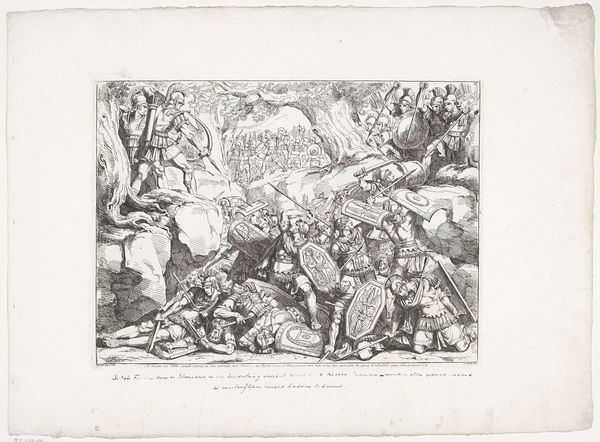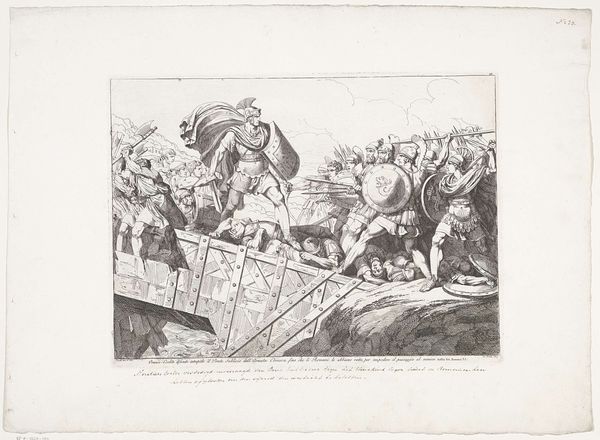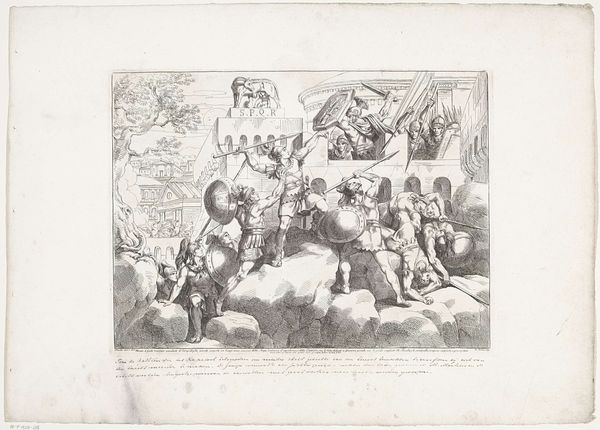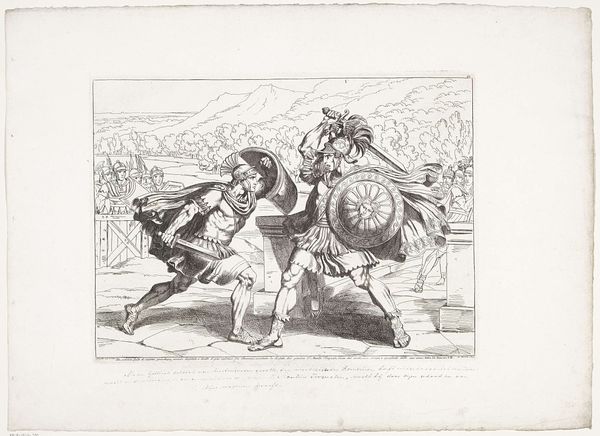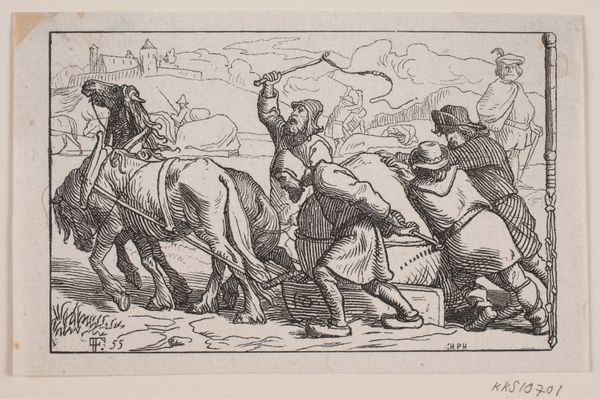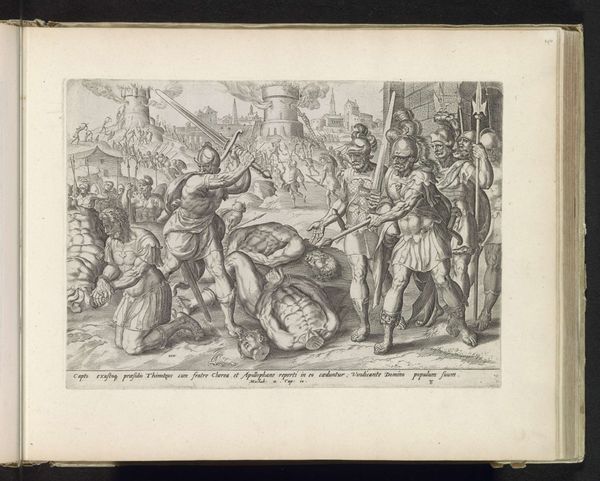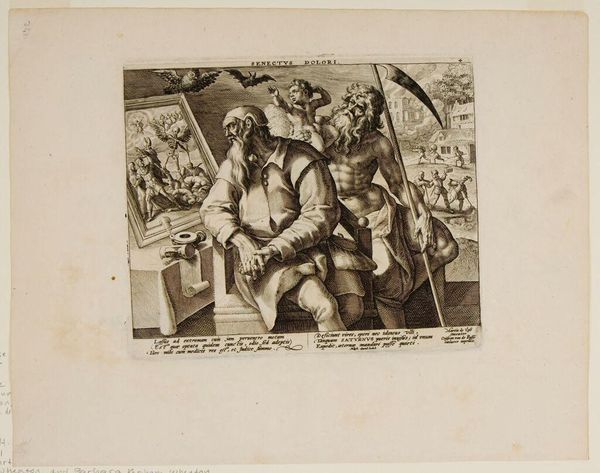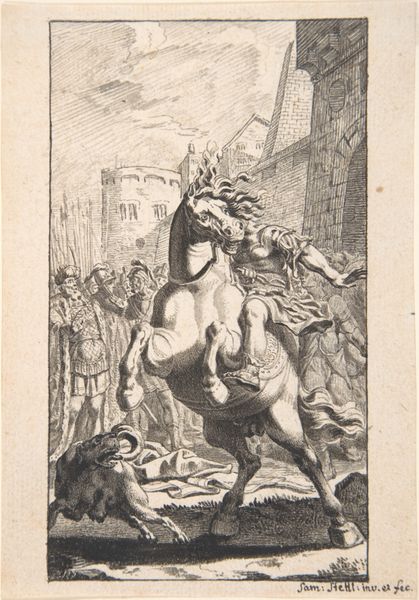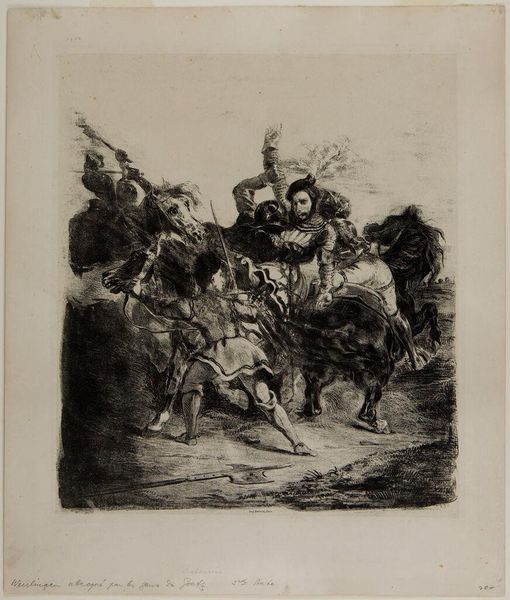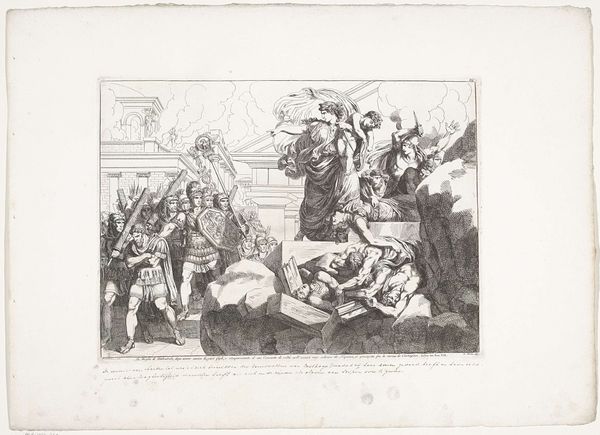
Dimensions: height 316 mm, width 425 mm
Copyright: Rijks Museum: Open Domain
Bartolomeo Pinelli created the etching "Aulus Cornelius Cossus doodt Lars Tolumnius" in the early 19th century, amid a surge of nationalist sentiment in Europe. Pinelli, an Italian artist, often turned to the stories of ancient Rome, recasting them with contemporary political undertones. Here, we witness Aulus Cornelius Cossus, a Roman soldier, slaying Lars Tolumnius, king of the Etruscan city of Veii. This scene isn't merely a historical depiction, but a reflection on power, valor, and the identity of a nation. The artist uses strong lines to highlight the tension and drama of the moment: the fallen king, the triumphant soldier. But consider who gets to tell this story. Who is remembered as the hero? What does it mean to glorify war and conquest? The act of immortalizing this ancient victory speaks to the desire for a unifying narrative, reminding us that art is never neutral. It's a reminder that even historical scenes are shaped by the present.
Comments
No comments
Be the first to comment and join the conversation on the ultimate creative platform.

